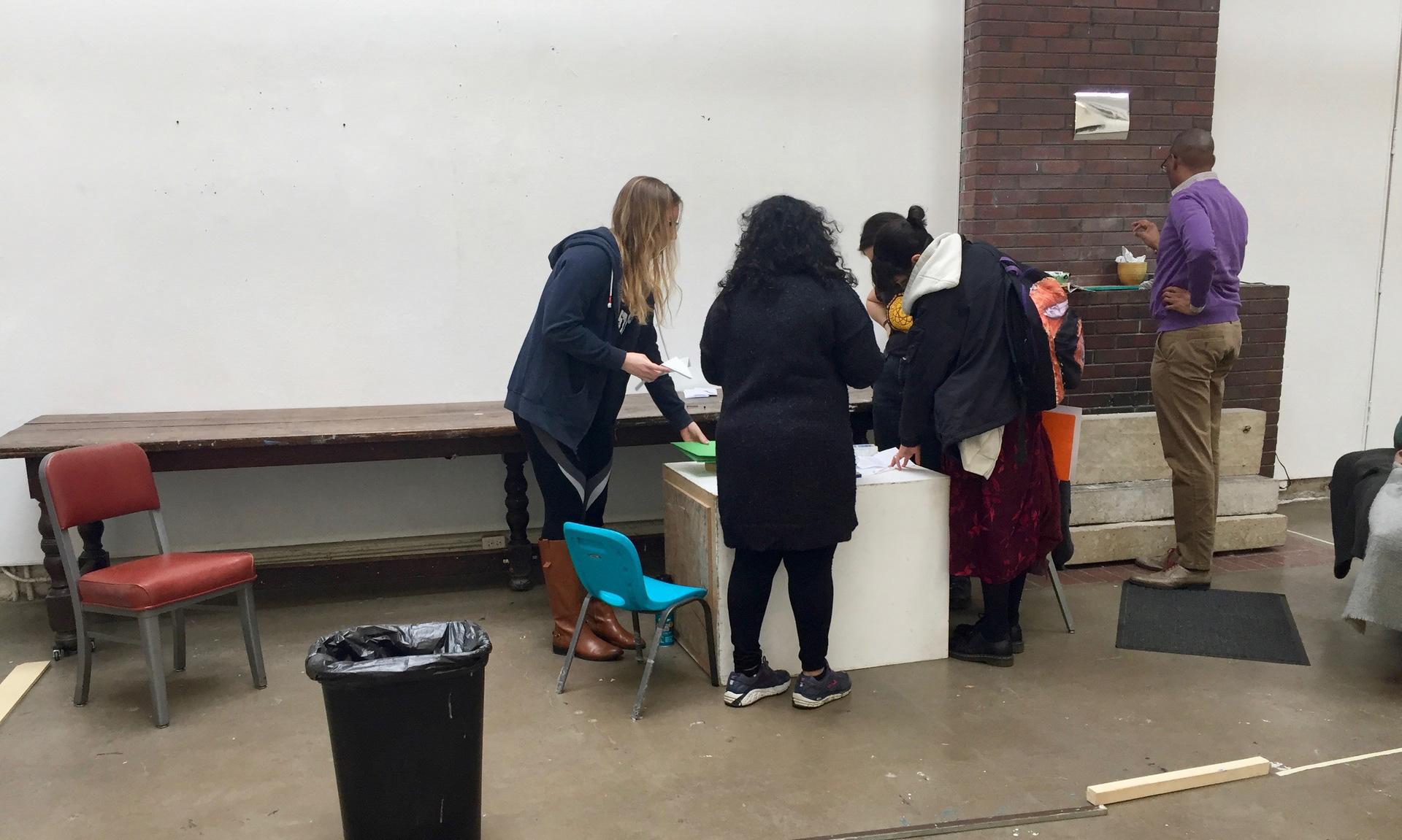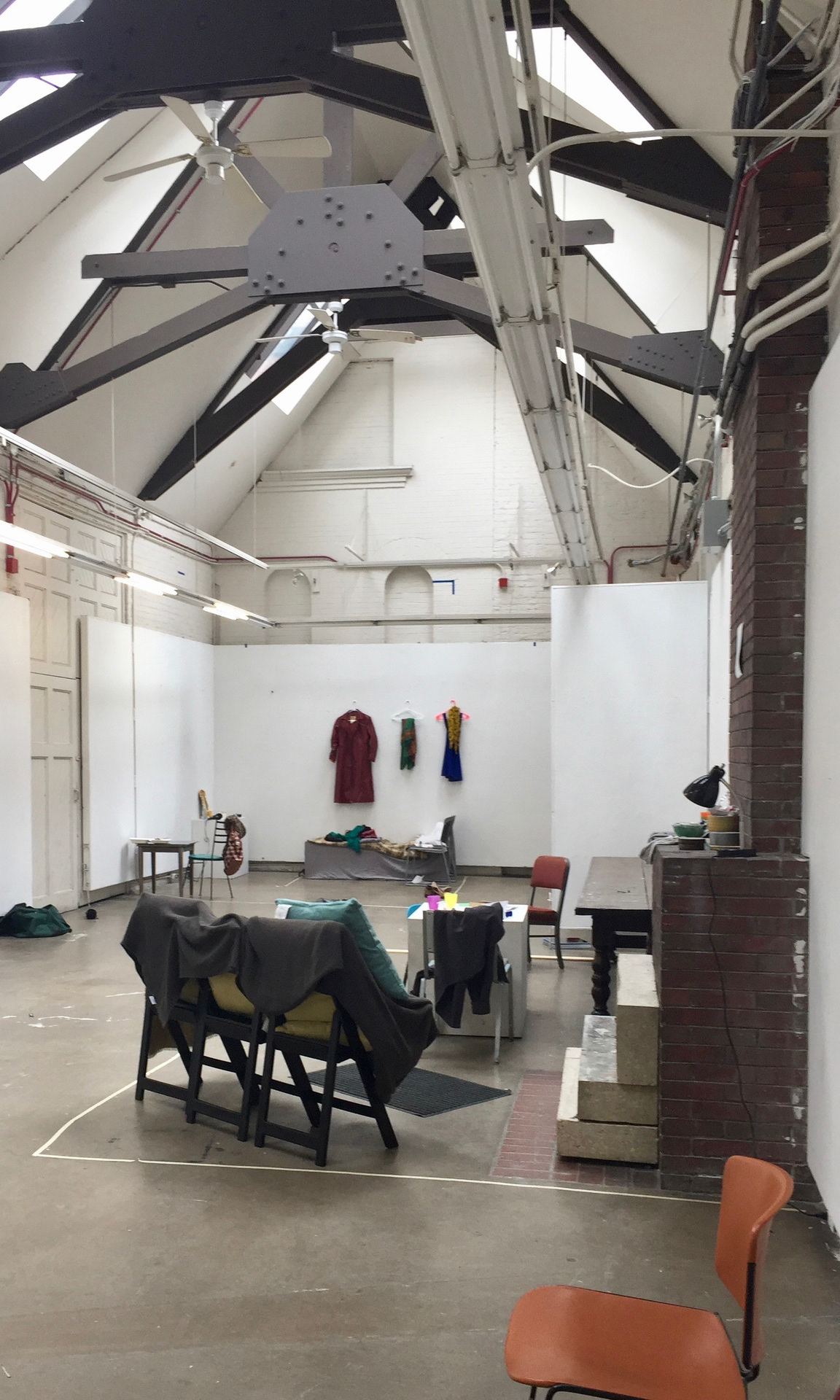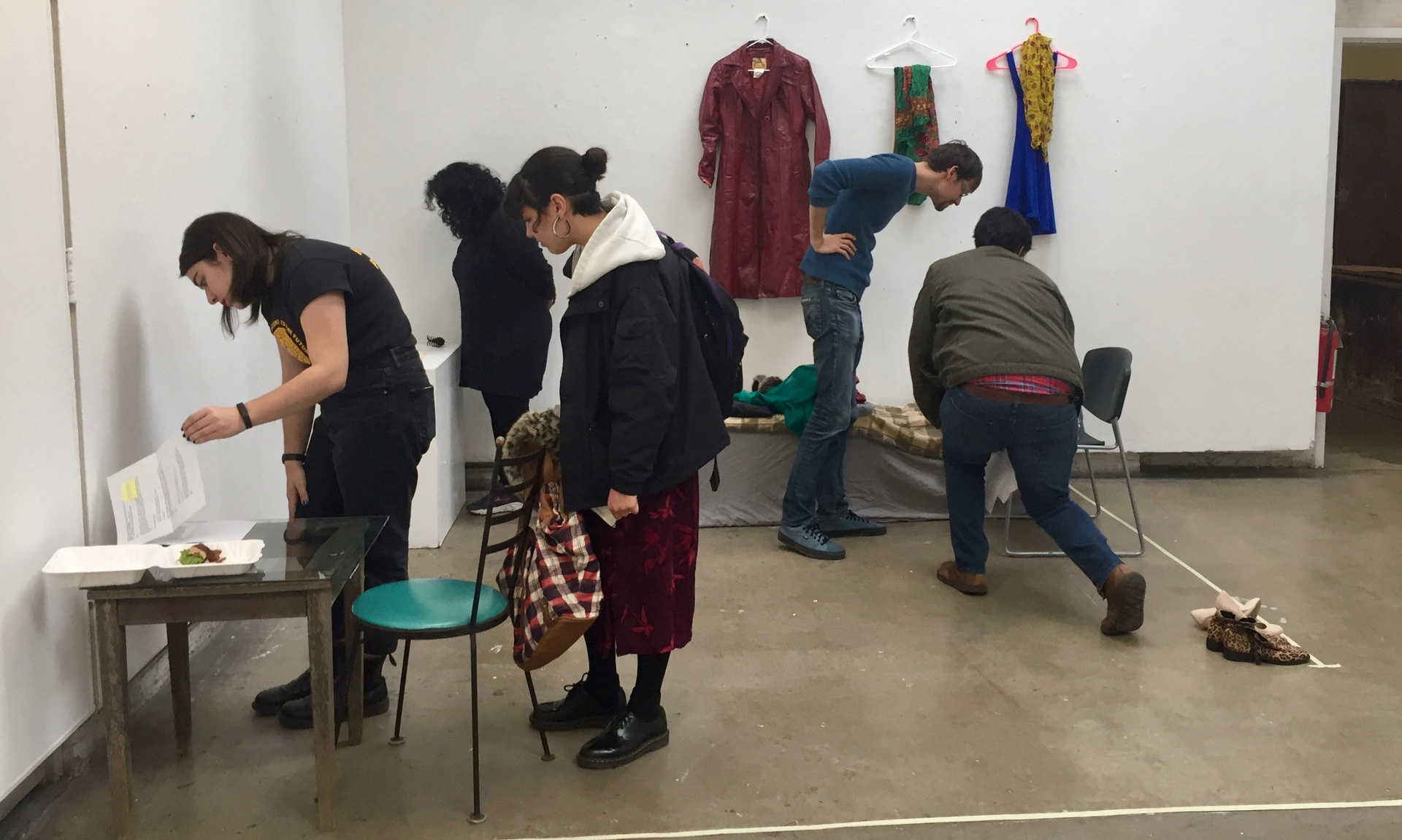Empty Spaces, Anxious Living is a speculative and critical design project exploring the topic of Policing and Prisons and, more largely, the prison industrial complex.
WHAT IS EMPTY SPACES, ANXIOUS LIVING?
Empty Spaces, Anxious Living is a critical and speculative design project conceived and built during a course taught by Dalit rights activist and transmedia storyteller Thenmozhi Soundararajan and Professor Patrick Jagoda in March 2017.
My team explored the topic of Policing and Prisons through human stories that illuminate larger systemic failures within the justice system. We designed and exhibited the living spaces of three characters personally affected by the prison industrial complex and invited participants to wander through the space. By exploring our characters’ physical living spaces through physical objects and textual documents, the participants could piece together what happened to the absent characters.
We wanted to encourage dialogue about the prison system and remove the distance we often experience when talking about those affected by these systems through the embodied experience of physically walking through the space and touching the characters’ possessions.
MY ROLE
My individual role on this collaborative project was as Narrative Designer, Writer, and Set Designer.
Inspired by the minimalist set from Lars van Trier's 2003 film, Dogville, I came up with the idea to tell a story of policing and prisons in the United States by creating a bare bones set that people could walk through and see completely through and the rest of our narrative design followed from that. As a writer, I created many of the written documents that appeared in the set and co-wrote the narrative for one of the story's characters, Alexa Michaels. I also worked as a set designer to create evocative spaces with very little material.
This project was in collaboration with Tiesha Casel, Juliette Hautemont, Kirah Nelson, and Angela Lin.
NARRATIVE OVERVIEW
We want to uplift the experiences of those who have or are currently experiencing incarceration and create a practice of making that holds all of us accountable to the communities and experiences we address in this project. In order to accomplish this, we based the narratives that guide the experience on the accounts of people who have shared their stories publicly. Source material included zines and newspapers created for and by people who’ve experienced incarceration, photo projects, and news articles that highlight experiences of incarceration.
In our initial presentation and prototype of this experience, we built out two of the three proposed narratives: Alexa Michaels and Ana Gutierrez. The third narrative of our character, Michael Rose, can be found along with the full narratives for Alexa and Ana in our Design Document.
Character Narratives
Alexa Michaels (whose space is pictured above) is a young transgender woman born and raised in Chicago. She was disowned by her family after coming out as transgender and began living on the streets. Her narrative, told through unsent letters, personal diaries, clothes, personal belongings, emails, and court documents, centers around her struggle as transgender woman of color trying to live a lawful life while dealing with policing biases and outdated prison policies stacked against her.
Ana Gutierrez is a 7-year old girl born in the United States to Mexican parents. When her mother and father were deported, Ana was sent to live with her aunt. Her narrative, revealed through letters, job applications, legal documents, visa applications, and citizenship application brochures, centers around her relationship with her aunt and their struggle to reunite Ana and her mother.
RECEPTION
"The question of policing has high stakes and with such intensity we rarely get to see the emotional consequences in a way that lets us truly feel empathy for what is happening in this vicious system. Your quiet piece does that and much more. [...] We appreciated your attention detail, the staging (including spatial storytelling techniques), and the analysis that allowed for the question of prisons and policing to really be understood for what they are."
"Art that provokes, art that is not didactic, and art that moves is some of the best art and you achieved all three."
-Thenmozhi Soundararajan
ADDITIONAL MEDIA


